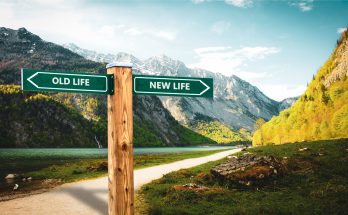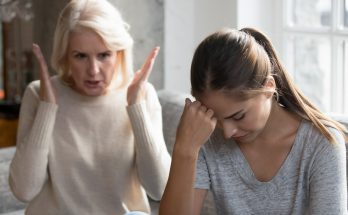We’re all in this together.” We’ve been hearing this since the pandemic took hold of us.
No, I’m not here to complain about the celebrities who say it from the expansive backyards of their lavish estates. The tone-deafness of those claims has already been covered by angry people on Twitter; I’ve got nothing new on that front.
Separate from the economic inequalities around this pandemic, separate from the health issues, and separate from the endless political rhetoric, the “we’re all in this together” statement is, at its most basic, fundamentally untrue.
We’ve had collective crises before. Even when we were all affected in different ways, we were still brought together by them. 9/11. The blackout that hit a huge swath of North America in 2003. Hurricane Sandy, in my neck of the woods. Those were all in my adult lifetime, and I remember that feeling of unity as we all tried to recover and reassess.
When I was a kid, a tornado swept through our suburban Toronto neighborhood, leaving some houses untouched (minus a few uprooted trees here and there), but tore the roof off others. What I remember the most about that day was the way everyone was outside after it was over, emerging from their houses where they’d been sheltering to swap stories about what damage had been done. We weren’t always super chitchatty with our neighbors back then, but this day was different: Everyone was talking to everyone.
In every other collective crisis, our sense of community has been heightened. We may have experienced the specifics in different ways, but we joined forces to help others or just commiserate, making it a shared experience instead of an isolated one.
And then, welcome to 2020, and COVID. When things started shutting down in March, the message was something we’d never heard before: Stay away from each other.
At the beginning of it all, we were discouraged from even talking to each other about it face-to-face, which, no matter how great technology gets, is still the best kind of human connection. One thing I’ve always loved about lining up in New York: You talk to people! And even if you’re shy and don’t engage with strangers that much, you get to overhear your fair share of hilarious commentary (“If I could find a man as hard as my hair, I’d be a happy woman,” I heard someone say in a ticket-buying line once, and never forgot it.).
Stay inside! was among the confusing first messages. Suddenly, we were deprived of the connective tissue that gets us through a local or even national—and this time global—crisis. Connecting with each other one-on-one, in-person, was the first thing forbidden. Do you have extended family members? Stay away from them. Should you walk out of your house and join a group of people from your block to talk about how strange this all is, how your kids are handling it, what your fears and concerns are? No.
People six feet apart in grocery store lines didn’t have conversations, despite being safely masked and gloved and outdoors. I think it wasn’t until June that people felt safe enough to talk to each other in the park or the street, now armed with at least a little more knowledge of how COVID-19 spreads. We can still be careful without being quite so afraid.
When there have been blackouts, we’ve gathered outside, talked to our neighbors, even had block parties. During Sandy, neighbors mobilized to help others, taking people in if they had power or offering to store their perishables for them.
Everyone had a story to tell, and we were all there for it. I was going through hell at the time as my mother was dying, and had intimate conversations on my commuter train with people I knew only peripherally as we swapped tales of woe.
9/11 was the big one, of course. I wasn’t at home when it happened; I was out and about in NYC, trying to run a quick errand before I went to work. Until I finally reached somewhere with a phone I could use, I got information on what was happening from the people around me, all strangers. People on the train. People in the vet’s waiting room where I went to pick up medication for my cat—one of them was an American Airlines flight attendant who knew more than the rest of us about what was happening. People in the street, walking in the same direction, seeing events unfold in real time. Together.
So we’re not in this one together, no matter what anybody says: We’re in it separately. We’re inside our homes, watching the world go by through windows and computer screens. We’re talking to each other with emails and phone calls, but not in person. We’re not getting a drink or a coffee, gathering friends together for dinners to support each other, or reuniting with our families on holidays to remind ourselves of our roots and our connections to each other.
But it’s not all isolationism and doom and gloom. For one, technology stepped in, bringing groups of us together in video chats not just for work, but for cocktail hours and friend reunions and family birthdays. I have family spread out across the globe—America, Canada, and Europe, at the moment—and until the pandemic, we never used to do group Zooms (We even learned the value of using the free version, which imposes a useful 40-minute limit, complete with a countdown clock for the last ten minutes). We are, finally, connecting.
And while the town I live in is between two of the biggest hotspots in America when this all started, we’ve been pretty vigilant, and COVID-19 case numbers here have plummeted.
We’re wearing our masks and taking precautions because we know they work, so we’re a lot less afraid to talk to each other. Gone are the darkest days when everyone skulked around in fear, an insidious virus lurking close behind. Now we know how it’s transmitted, we know that there are ways to interact and be with each other without feeling its ugly threat—we can stop and chat when we run into each other in the parks, we can talk to strangers about how long we’ve been in line or where we found some elusive disinfecting wipes or other in-demand supplies.
We’re slowly finding our way back, even though it’s not the same.
A few weeks after the pandemic shut everything down, I ran into one of my very close friends at the grocery store. We hadn’t seen each other in a few weeks—hell, we hadn’t seen anyone in a few weeks—and I was halfway towards her for a hug when I stopped myself. “I can’t believe I can’t hug you right now,” I said sadly. “I know,” she replied. We looked at each other, forlorn, and already feeling pressure to separate because we were now in a grocery aisle together, creating danger for others with our mere presence. Our connection was derailed. The chasms that keep us apart aren’t just philosophical or political, they’re physical.
And that’s why we’re not in this together. The coronavirus has deprived us of connection, of community, of the very thing that makes humanity worth saving. And I can’t wait until we find it again.



